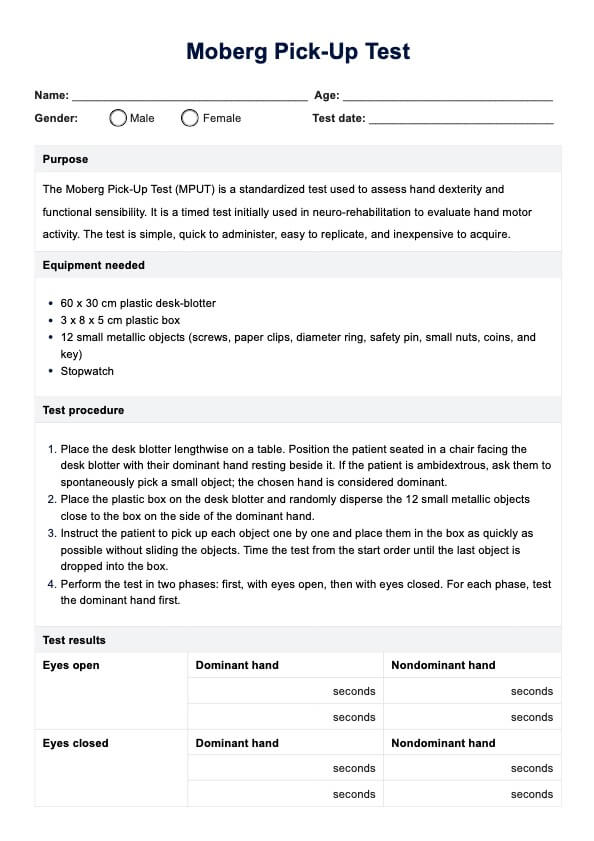The Moberg Pick-Up Test assesses hand dexterity and functional sensibility, particularly in patients with conditions such as carpal tunnel syndrome, rheumatoid arthritis, and peripheral nerve injuries.

Moberg Pick-Up Test
Learn how to use the Moberg Pick-Up Test template to assess hand dexterity and functional sensibility effectively. Enhance your assessments with our detailed guide!
Use Template
Moberg Pick-Up Test Template
Commonly asked questions
The test involves quickly picking up small metallic objects and placing them in a box. It is conducted in two phases: with eyes open and eyes closed, testing both the dominant and nondominant hands.
The test requires a plastic desk blotter, a plastic box, 12 small metallic objects (e.g., screws, paper clips, coins), and a stopwatch.
EHR and practice management software
Get started for free
*No credit card required
Free
$0/usd
Unlimited clients
Telehealth
1GB of storage
Client portal text
Automated billing and online payments











